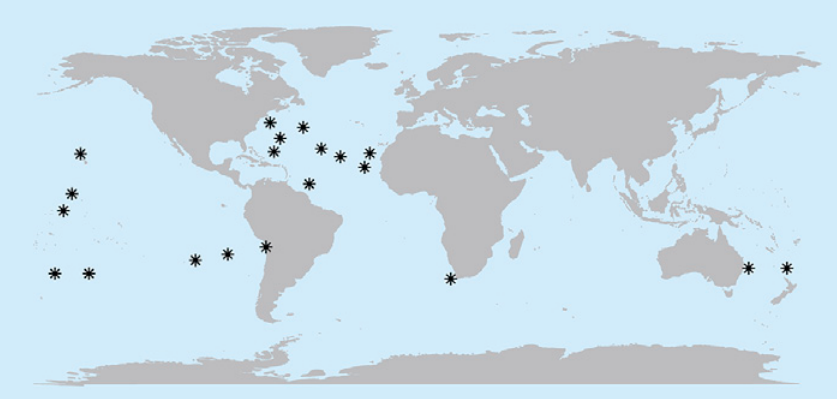Modelling notes, overview
Tags, SAGs and MAGs
Tags:
Pros:
- Comprehensive
- Quantitative
- Networks / interactions
- Simple to interpret
Cons:
- No genome info
- Comparatively low resolution
SAGs
Pros:
- Genome content
- Traits
- Many have rRNA sequences
Cons:
- Incomplete (~1/3 on average)
- Surface only
- Rabbit hole
MAGs:
Pros:
- Genome content
- Deep sample info (BGT)
- May be more complete
Cons:
- Harder to process/interpret
- No rRNA
- Rabbit hole
Moving forward
Ways to proceed:
- BioGEOTRACES samples are obvious first step:
- Tags, MAGs, SAGs all together
- Sarah already working on integration Tags <=> SAGs
- Input from Emily would be helpful here
- Jesse working on Tags:
- Distributions in relation to water column features
- Network analysis (i.e. with phototrophs)
- Help inform ecological interpretation
New datasets
- CLIVAR cruises of particular interest:
- Unfractionated, pass through very distinct regions
- Evenly sampled down to 1000m, historical record
- Cons:
- No $ to do metagenomes, only Tags + SAGs

Text

GORG SAGs
Integrating 'omics and modelling
Suggest to prioritize "high level" metrics:
- Genome size, Codon Usage Bias
- Check for obvious pangenome differences
- Could be combined with derived Tag data, i.e. phototroph-bacterioplankton interactions
- Other metrics could include existing databases:
- MEROPS (proteases)
- CAzyme (carbohydrate-active enzymes)
bacterioplankton-modelling-overview
By jcmcnch
bacterioplankton-modelling-overview
- 35



